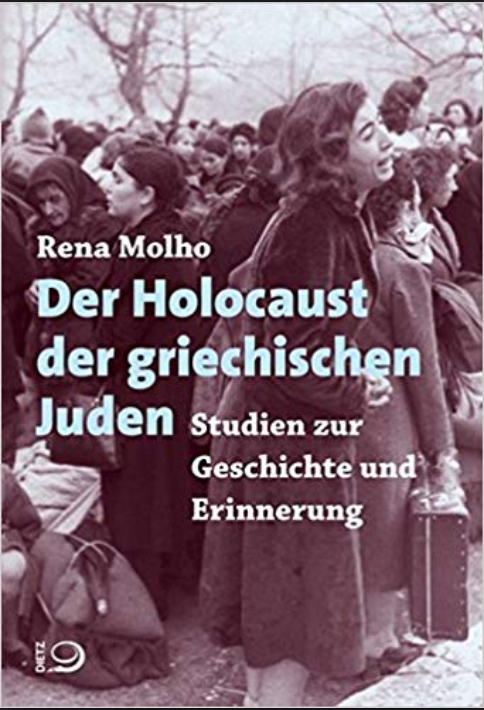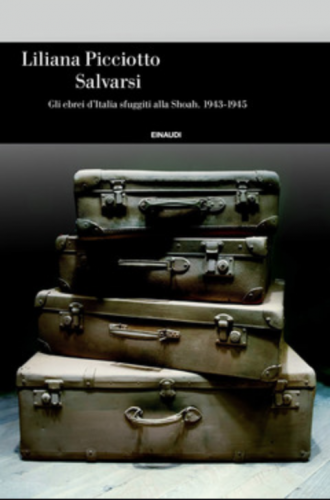
The study of the Shoah in Greece, over the course of which about 86% of the country’s Jewish population was deported and murdered in German concentration and extermination camps, had been neglected by Greek academia and civil society for decades. Only in the 1990s did Jewish Studies and Holocaust Research emerge as research fields in Greece; through the struggle of the scholars who fought for academic as well as public recognition, it became clear that the missing reappraisal of national history was not caused by an alleged social amnesia, but was instead based on a conscious dispossession of history for political reasons. The policy of social reconciliation after the German occupation (1941-1944) and the civil war (1946-1949) did not aim at the inclusion of the tiny minority of Jewish survivors, that consisted of less than 2,000 who had returned from the camps or had survived by hiding, emigrating or receiving assistance from the partisan efforts during the war (ca. 8-9,000). Additionally, the dominating helleno-christian doctrine did not leave much space for the ideals of a pluralistic society.
The 1946 Thessaloniki born historian Rena Molho is one of those pioneers of Greek Jewish Studies, always asking uncomfortable questions and never mincing words. The book at hand, Der Holocaust der griechischen Juden, is a plain German translation of Molho’s various, mainly published essays, articles and book reviews over the last two decades. It first appeared in the renowned Athens edition Patakis in 2015 along with a foreword of the Greek jurist Nikos Zaikos. The translation of Molho’s writings is warmly welcomed since public awareness of the faith of the Greek Jews under the German occupation has only recently begun to rise in Germany.
The book is thematically divided into three parts with a total of twelve chapters, concluded by an appendix, bibliography and register. With a critical literature report, Molho introduces her subject and traces back the rocky path of Jewish Studies and Holocaust Research in Greece with all its factional fights and pitfalls, at times with a quite polemical tone (pp. 23-48). A strong emphasis is put on the first part entitled “History and Memory,” which spans more than half of the entire book (pp. 23-126). It is here that Molho underlines how, especially in Thessaloniki, even before the German occupation the relationship between Jews and (orthodox) Christians was anything but harmonic (pp. 57-8). What is more, during the war there, was – in contrast to the official national narrative – no collective resistance but rather collaboration with the Germans. The destruction of the Jewish cemetery of Thessaloniki under the initiative of the municipal’s administration in 1942 (pp. 63-5), the opportunistic enrichment of orthodox Christian citizens over the course of the expropriation of the Jews by the German military administration – especially but not exclusively in Thessaloniki – the strong and (mainly) successful civil opposition against the forlorn survivors’ restitution demands after the war and, finally, the Greek amnesty for German war criminals in 1959 (pp. 69-82) are prime examples by which she underlines her thesis. The insecurity and the years of mostly fruitless legal disputes that followed the post-war decade finally drove about 50% of the survivors into emigration.
Exposing the official image of collective national resistance against German barbarity is Molho’s recurrent subject, to which she continues to attend to in the second part of the book, entitled “Published Sources and Books,” as well (pp. 129-79). Opening with a harsh critique of the selective teaching of the Shoah in Greek public schools, which began only since 2005, she concludes that Greek pupils are steered to reproduce the official myths of Greek history politics (pp. 129-38). Though without ignoring the shiny examples of civil courage, officials and clerics who de facto helped the Jews escape “can be counted on one hand” in the end (p. 132). In contrast to the German editor’s blurb, the chapter on the extermination of the Jews of Ioannina is essentially a book review (pp. 139-53) while the controversy surrounding the extermination of the Jews in the Bulgarian occupation zone (pp. 172-179) mainly represents Molho’s introduction to and her commentary on the late testimony/confession of a Bulgarian soldier in 1996 (pp. 175-8).
The book closes with Molho’s reflections on her experiences as a coordinator and interviewer of 57 Shoah survivors in Greece on behalf of the Shoah Visual History Foundation (Spielberg) between 1996 and 1999 (pp. 182-217). The guideline for interviewers she provides here is a standard hand out for historians doing practical fieldwork of oral history in Greece.
Rena Molho’s well-researched writings not only include a deep knowledge of the Jewish history of Greece, but they moreover provide an overview on the various themes and facets of Greek Holocaust Research in a way that provides scholarly access to these issues. Additionally, they reflect, sometimes unintentionally, an inside view on the highly politicized inner Greek debate of the last two decades.
Since the book is one of the very few history publications dealing with the Shoah in Greece, the editor should be advised that a final revised edition might not only eliminate the many translation-related misunderstandings (inter alia wrong terming) but could also provide the correct archival reference of some of the historical images (p. 113 and p. 115) and, of course, the book cover, to which there is no reference at all. This is especially quite negligent. (1) The Wehrmacht photos documenting the deportation of the Jews of Ioannina are in the German Federal Archives (cover and p. 113) and the name of the crying young woman on the book cover is the 1925 born Fani Haim. She survived Auschwitz as one of the very few Jews from Ioannina (1,960 before March 25, 1944). Her entire family was murdered. Later she married, became a mother and died as a grandmother in 2008. (2) The internationally known photo by Horace Abrahams of the liberation of Dachau (p. 115) is in the United States Holocaust Memorial Museum in Washington DC (USHMM) and some those pictured are known by name as well.
Quite apart from that, the book is not only an enrichment of historical scholarship because Molho always turns to the public with her writings. It is due to the socio-political commitment of historians like her that, in 2015, a chair for Jewish Studies at Aristotle University in Thessaloniki was re-established (since the Metaxas Dictatorship, 1936) and the foundation-stone was laid for the construction of a Holocaust Museum in January 2018. Therefore, as Molho frames it in a brief epigraph to her writings, “A chapter was written but the book is never finished.”
Tobias Blümel, Freie Universität Berlin
Rena Molho, Der Holocaust der griechischen Juden. Studien zur Geschichte und Erinnerung, (Bonn: J. H. W. Dietz Nachf, 2016), pp. 263.
DOI: 10.48248/issn.2037-741X/684
